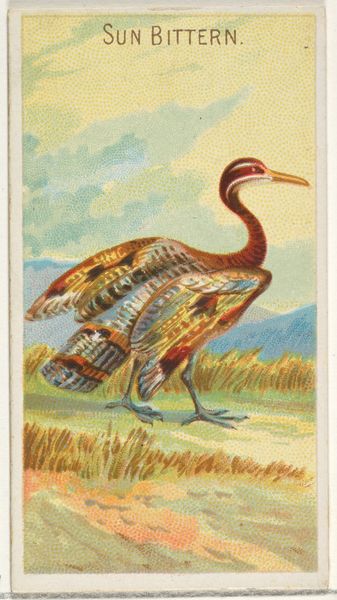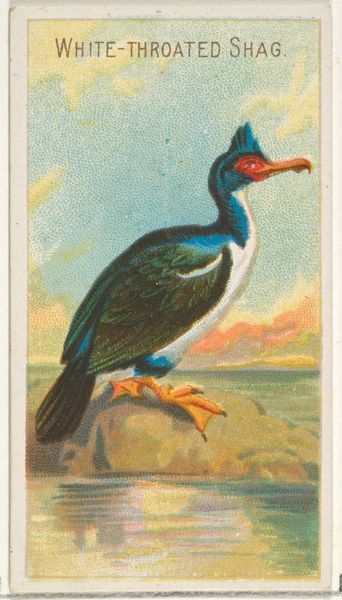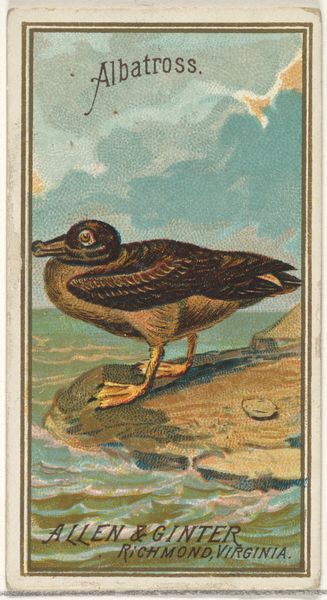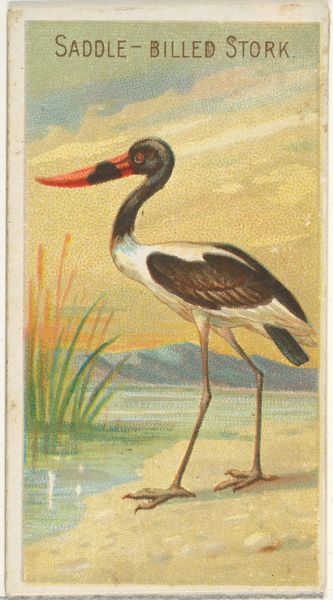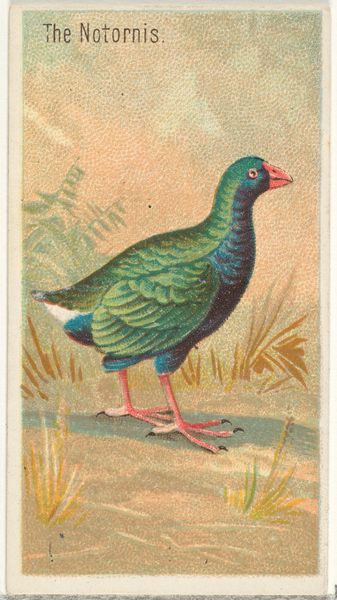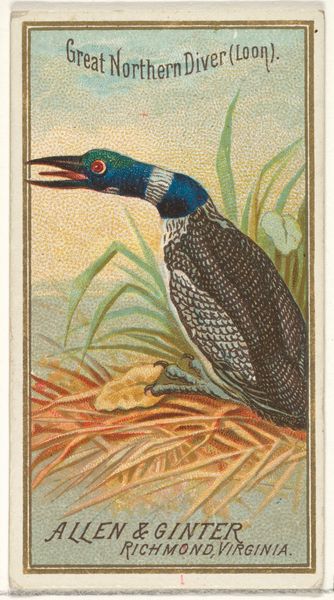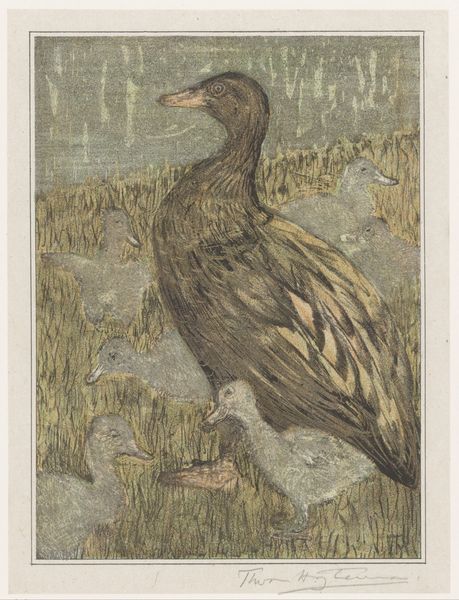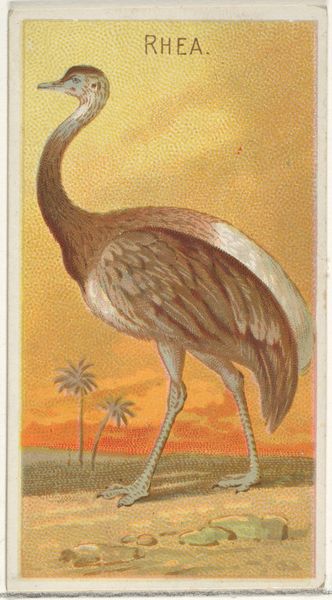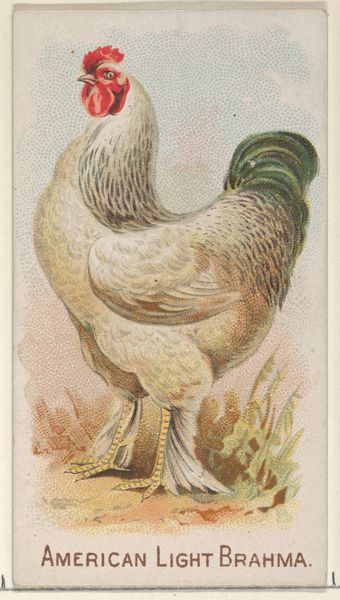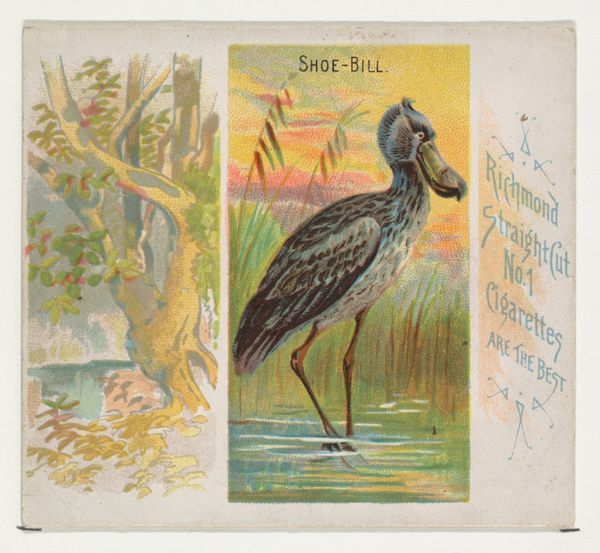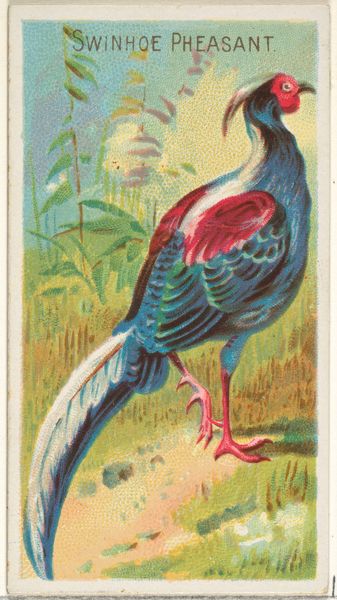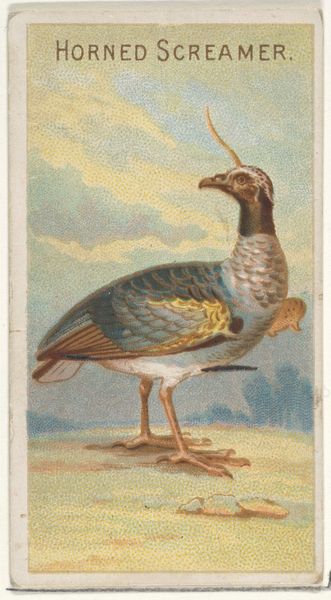
Shoe-Bill, from the Birds of the Tropics series (N5) for Allen & Ginter Cigarettes Brands 1889
0:00
0:00
Dimensions: Sheet: 2 3/4 x 1 1/2 in. (7 x 3.8 cm)
Copyright: Public Domain
Editor: Here we have "Shoe-Bill," a colored-pencil print from 1889 made for Allen & Ginter cigarette packs. The bird itself is striking, but I'm also drawn to the way the background almost melts into it. How should we understand this work? Curator: Well, considering this was made for a cigarette brand, we have to examine it through the lens of commerce and consumption. These cards, mass-produced with colored pencils and printmaking techniques, were essentially marketing tools. How does the aesthetic of Ukiyo-e influence this commercial object? Editor: Ukiyo-e? Curator: Yes, that’s Japanese woodblock printing. Notice the flattened perspective, the focus on natural elements, and the decorative qualities, even the bold outlining of forms are evocative of Ukiyo-e. Does it challenge the hierarchy between high art and commercial design? Editor: I suppose so, but how does this all relate to the materiality? Curator: Think about the production process. Tobacco companies distributed these cards, embedding art within everyday life and addiction, utilizing cheap and mass-produced materials like cardstock and colored inks, thus questioning the role of labor. How does seeing this in a museum re-contextualize the labor practices implicit in it? Editor: I see. By appreciating the aesthetic, we are recognizing the cultural background that may be overshadowed by commerce. It's like we are examining a layered story within the artwork, not just an image. Curator: Exactly. And perhaps contemplating the larger framework of artistic appropriation and the societal context of art and capitalism. Editor: This definitely gives me a lot to think about!
Comments
No comments
Be the first to comment and join the conversation on the ultimate creative platform.
